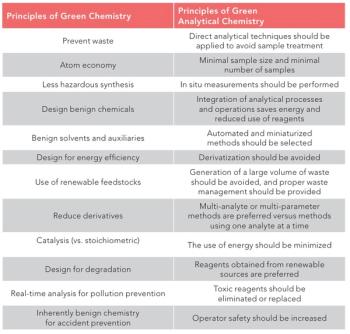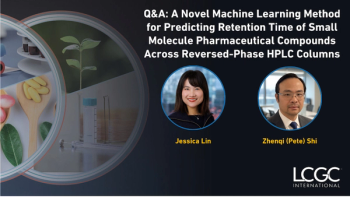
- July/August 2023
- Volume 41
- Issue 7
- Pages: 300
The Continued Pursuit of Pure Compounds
Understanding separation principles is the key to success. Here's why.
The first lesson I learned from my research advisor as a new graduate student was “Always work with pure compounds,” a simple (and seemingly obvious) statement. However, as I struggled to isolate transition metal complexes to perform spectroscopic measurements, I realized its importance and the need for a basic fundamental knowledge in separation strategies. Too many columns were run only to see brightly colored compounds streaming down the inner column wall with bands measured in centimeters rather than millimeters. Calling them “bands” was probably my first mistake. Sure, my goal was to discover new properties of luminescent molecules, but without first isolating the target molecule, that goal was unattainable. Understanding separation principles was the key to my eventual success.
This lesson has been reinforced throughout my career, yet I am surprised how many people take the “art” of chemical separations for granted. From attending conferences, listening to department seminars or sitting on student proposal defenses, it is clear that the success of a significant number of lines of research across the subdisciplines of chemistry depends on some form of chemical separations. In fact, my first statement as I begin lectures on separations in my instrumental analysis class is “Understanding the fundamentals of separations is required in all disciplines of chemistry,” followed by “the need for separations is highly interdisciplinary and not restricted to chemistry research.”
As I began my career at The University of Toledo in 1989, I was asked by the department chair to help modernize the analytical curriculum. My background was electrochemistry and spectroscopy, while my analytical colleagues at the time focused on classical analytical methods of thermal analysis and atomic spectroscopy. Our goal was to eventually have faculty expertise in electrochemistry, spectroscopy, mass spectrometry and chemical separations as the cornerstone of the analytical curriculum.
To begin the process, my physical chemistry colleague, Andy Jorgensen, who had a background in gas chromatography, and I developed the first dedicated course in chemical separations. An important component to our course was to have a companion laboratory so students could learn the essential hands-on laboratory skills needed to effectively utilize chromatographic instrumentation for research. This course was the foundation for the next step, which was to identify and hire talented young faculty to create research programs for in depth student training. Subsequent hires of Jared Anderson in 2005 and Emanuela Gionfriddo in 2018, both recipients of the LCGC Emerging Leader in Chromatography and the ACS Young Investigator in Separation Science Awards, created outstanding research and teaching programs in chemical separations, solidifying a tradition of excellence in chemical separations in our department. The graduates from their groups are now part of a new generation of separation scientists in academiaand industry.
As chair of the Department of Chemistry and Biochemistry at The University of Toledo, I continued to champion the importance of the chemical separations course for all students. At times, it has been an uphill battle. As students learn, we expect the occasional saturated detector or clogged liner in the gas chromatography (GC) or liquid chromatography (LC) mass spectrometers (MS), because, of course, if you don’t first see a signal the obvious solution is to inject a bigger sample of an untreated reaction mixture, right? The concept of sample preparation is often overlooked. What is even more surprising is hearing statements like one from a colleague: “I can teach my students all they need to know about separations in an afternoon.” I often wonder how much productivity, resources and time are lost from a lack of fundamental knowledge in chemical separations.
Those simple but powerful words that were instilled in me as a graduate student have allowed me to pursue the development of selective and sensitive sensors and new materials for chemical separations. It is not surprising that my students have been successful in securing quality positions upon graduation. Their broad training in analytical chemistry and knowledge of chemical separations have made them very marketable. Students looking for challenging and rewarding careers should investigate the excellent and expanding opportunities for separation scientists. The need for talented separation scientists in academia and industry will not decrease. I strongly encourage analytical programs to continue to include focused hands on instruction and research programs in separations science. Emerging research challenges will continue to need scientists skilled in the “art” as well as the fundamental “science” of chemical separations to continue the pursuit of pure compounds.
Articles in this issue
over 2 years ago
Strongly Adsorbing Analytes: What, Why, and How to Fix Itover 2 years ago
Basic Care and Feeding of Your Detectorover 2 years ago
Enhancing Extractions by Salting Outover 2 years ago
A Modern Mineral Oil Hydrocarbon AnalysisNewsletter
Join the global community of analytical scientists who trust LCGC for insights on the latest techniques, trends, and expert solutions in chromatography.




